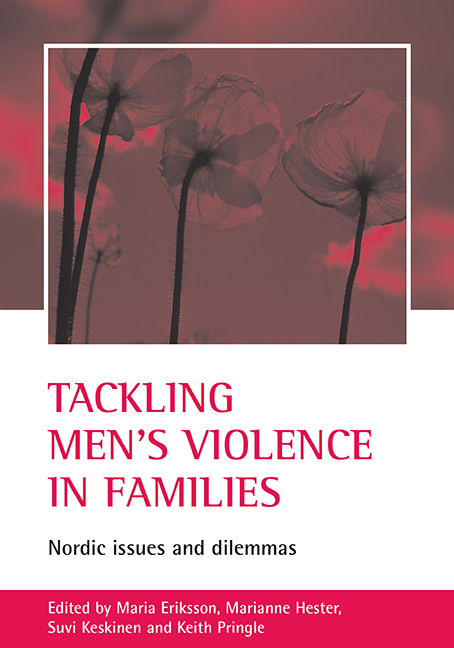Book contents
- Frontmatter
- Contents
- List of tables and figures
- Acknowledgements
- Notes on contributors
- one Introduction: Nordic issues and dilemmas
- two Children, abuse and parental contact in Denmark
- three Commitments and contradictions: linking violence, parenthood and professionalism
- four “Talking feels like you wouldn’t love Dad anymore”: children’s emotions, close relations and domestic violence
- five Bypassing the relationship between fatherhood and violence in Finnish policy and research
- six Marching on the spot? Dealing with violence against women in Norway
- seven Children’s peace? The possibility of protecting children by means of criminal law and family law
- eight A visible or invisible child? Professionals’ approaches to children whose father is violent towards their mother
- nine “Take my father away from home”: children growing up in the proximity of violence
- ten Neglected issues in Swedish child protection policy and practice: age, ethnicity and gender
- eleven Tackling men’s violence in families: lessons for the UK
- References
- Index
nine - “Take my father away from home”: children growing up in the proximity of violence
Published online by Cambridge University Press: 20 January 2022
- Frontmatter
- Contents
- List of tables and figures
- Acknowledgements
- Notes on contributors
- one Introduction: Nordic issues and dilemmas
- two Children, abuse and parental contact in Denmark
- three Commitments and contradictions: linking violence, parenthood and professionalism
- four “Talking feels like you wouldn’t love Dad anymore”: children’s emotions, close relations and domestic violence
- five Bypassing the relationship between fatherhood and violence in Finnish policy and research
- six Marching on the spot? Dealing with violence against women in Norway
- seven Children’s peace? The possibility of protecting children by means of criminal law and family law
- eight A visible or invisible child? Professionals’ approaches to children whose father is violent towards their mother
- nine “Take my father away from home”: children growing up in the proximity of violence
- ten Neglected issues in Swedish child protection policy and practice: age, ethnicity and gender
- eleven Tackling men’s violence in families: lessons for the UK
- References
- Index
Summary
In this chapter, my focus is young people's narratives of growing up in the proximity of violence. The discussion draws on my research into experiences of violence in families, which constituted the first major research project on men's violence against women and children's experiences and perspectives of violence in Sweden (Weinehall, 1997).
Sweden is generally perceived as a country where principles of gender equality and justice are prevailing and Swedes also like to think that. Sweden is a leading country with regard to these issues. Nonetheless, national studies show that violence in intimate relationships in Sweden is extensive (see Lundgren et al, 2001; Chapter One in this volume).
A battered woman does not always live alone with a violent man. Many of the women also have children. The man who perpetrates violence could be her present or former husband or partner. He could be the child's father or stepfather. When a man/husband/the child's father abuses the child's mother, events may take place in total secrecy, inside the home, and become a family secret (Weinehall, 2002b). There are seldom any witnesses to the violent episodes other than the children. To be forced to witness the mother being battered by the father or stepfather means that the child is psychologically abused. Research confirms that many such children are also physically abused. A battered woman's child is, compared with other children, 15 times more likely to be physically abused (SOU 2001:72, p 300).
About one fifth of the population in Sweden (around 1.9 million people) are children and young people less than 18 years of age (www.scb.se/statistik – Statistics Sweden, 31 December 2004). They are generally thought to have good living conditions, and to be well taken care of by their parents. For some of these children, however, circumstances are not as good; the home is not a peaceful place to be in (Weinehall, 1999). According to Save the Children in Sweden, about 190,000 to 200,000 Swedish children are thought to have experiences of violence at home (Arnell and Ekbom, 1999, p 32). This corresponds to the numbers presented by the Committee against child abuse, which points out that 10% of Swedish children have experiences of violence at home and 5% of children experience it often (SOU 2001:18, p 12).
- Type
- Chapter
- Information
- Tackling Men's Violence in FamiliesNordic Issues and Dilemmas, pp. 137 - 154Publisher: Bristol University PressPrint publication year: 2005
- 3
- Cited by



